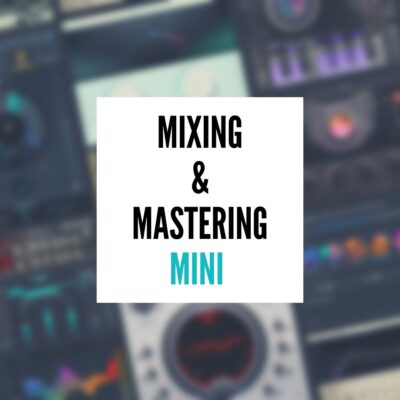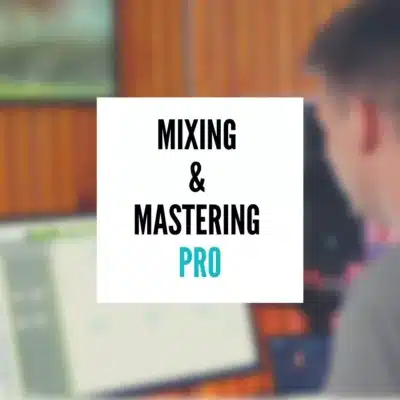Introduction: So Your Songs Are Ready for the World
You’ve written the lyrics, recorded the parts, and lived with the demo long enough to know it’s finally ready. Whether your song is headed for Spotify, Apple Music, the radio, or just the aux cord at your next show, there’s one step that can take it from “pretty good” to professionally polished—getting it mixed.
But here’s the part that often gets overlooked: how you prepare your files before sending them off can make or break the final result.
As a mix engineer, I’ve received everything from perfectly organized sessions to jumbled messes of half-processed tracks and missing audio. And while a lot of damage control is possible, there’s a fine line between “fixable” and “too far gone.” At the very least, poor session prep slows down the process. At worst, it limits the potential of the mix—and your song.
The good news? You don’t need to be a tech wizard to set your mix up for success. You just need to follow a few simple guidelines that give your engineer the control and clarity they need to bring your vision to life.
In this article, I’ll walk you through three essential steps to take before sending your songs to get mixed—the exact steps I recommend to every client I work with. Do these right, and you’ll save time, avoid revisions, and most importantly, get the best mix possible.
Step 1: Turn Off EQ, Compression, and Limiters—Unless It’s Part of the Sound
One of the easiest ways to limit what your mix engineer can do—often without realizing it—is by sending tracks that are already heavily processed. Compression, EQ, limiting… these are powerful tools, but when they’re baked into your stems, they leave very little room for correction or enhancement.
From a mixing engineer’s perspective, the goal is to shape the song’s tonal balance, dynamics, and spatial depth. But if your vocal already has a harsh top-end EQ curve or your bass is squashed by a limiter, I’m locked into a sound that might not serve the track. In the worst cases, this can make a great mix impossible—and at best, it makes things more difficult and time-consuming.
There’s a simple rule of thumb here: unless a plugin or effect is critical to your creative vision—disable it before bouncing your stems. That means:
-
Bypass any corrective EQs, unless they’re fixing something that has to be addressed (like a nasty room resonance).
-
Remove compressors that were just there to “tighten up” a part during tracking.
-
Turn off limiters that were keeping peaks under control on individual tracks. Your mix engineer has tools for that.
Now, if you’ve applied something that defines the character of a sound—say, a distorted vocal or a crunchy parallel snare buss—you can keep it. Just be sure to print both the processed and unprocessed version. Giving both options shows care and gives your engineer flexibility.
As someone who’s mixed thousands of songs over the years, I can tell you: giving me the cleanest, most dynamic version of your tracks lets me do what you’re hiring me to do—craft a mix that translates everywhere. From Spotify to a car stereo to the club, that clarity makes all the difference.
Step 2: Print Your Time-Based Effects Separately—Give Us the Wet and the Dry
Reverbs, delays, echoes, flangers—these effects can give a vocal its sense of space, a synth its depth, or a snare its attitude. But when they’re baked into a track with no dry version to fall back on, they can just as easily box your mix engineer into a corner.
Here’s the issue: those lush tails or ping-pong delays might sound great in your studio, but they don’t always sit well once the full mix starts coming together. Without the dry track, I can’t adjust the balance between your effects and the source. And if those effects were added with a limiter or EQ already on the channel, we’re in even deeper.
The best solution is simple—and it’s standard practice in professional sessions:
Print two versions of each track that uses time-based effects
-
Dry version – The original source with no reverb, delay, or modulation.
-
Wet version – The same track with your effects printed on.
This gives your engineer complete flexibility. We can blend them together to taste, swap in alternate processing if needed, or even time-align things more tightly to the groove. It also ensures your creative vision is preserved, without sacrificing mix clarity.
To make things easy, label your files clearly:
-
LeadVox_Dry.wav
-
LeadVox_Reverb.wav
-
Guitar_Intro_Delay.wav
If a particular effect is vital to the song—like a lo-fi slapback on a vocal hook—include a quick note about it. A little context can go a long way in preserving your intent.
Remember, mixing isn’t about undoing your creativity. It’s about building on it—and clear, flexible file prep helps us do that in a way that honors both your sound and your song.
Step 3: Clean Up Your Takes and Bounce in Place
One of the most overlooked parts of mix prep is also one of the most important: editing your audio and bouncing everything in place.
Here’s the thing—mixing isn’t editing. They’re two different skill sets. When I sit down to mix a song, I’m thinking about energy, emotion, tone, and movement—not scrubbing out headphone bleed, tightening timing, or fixing pops and clicks. And while I’ll always fix what I can, sending a mix-ready session is one of the best ways to speed things up andget better results.
Before you export your tracks, take a moment to listen critically:
-
Are there any weird background noises, breaths, or hums in the silent parts?
-
Do you hear digital clicks or pops that need to be removed?
-
Is the vocal comp tight and free of double takes or rough edits?
-
Are the levels consistent enough that nothing jumps out wildly?
If you find something that seems off, fix it now. Most of the artifacts that sneak into recordings—mic distortion, oversaturated plugins, clipped transients—can’t be fully repaired in the mix.
Next, bounce each track in place. That means rendering the final audio with all the edits, clip gains, fades, and time-alignment locked in. Your mix engineer shouldn’t have to guess where things go or rebuild your session layout. Exporting stems that are exactly as they sound in your rough mix ensures your arrangement, timing, and vibe are preserved—and it avoids those dreaded emails asking for re-exports at the last minute.
If you’re not sure how to bounce in place with your DAW, a quick YouTube search will help—just look up something like “bounce in place [your DAW name].” Or, if you’re working in Logic, Pro Tools, Studio One, or Ableton, I’ve got you covered—reach out and I’ll walk you through it.
Bottom line: the cleaner your tracks, the cleaner your mix. And giving your engineer a solid foundation to work from is the fastest way to get your song sounding the way you imagined—just better.
Conclusion: Set Your Song Up for Success
Prepping your tracks for mixing isn’t just about being organized—it’s about giving your music the best possible chance to shine. By turning off unnecessary processing, printing your effects separately, and cleaning up your tracks before bouncing them in place, you’re handing your engineer the tools they need to do their best work.
These steps don’t just make the mix process smoother—they lead to better-sounding results, fewer revisions, and a final product that’s more in line with your original creative vision.
If you’re looking for a professional mix that brings your song to life—whether you’re a singer, songwriter, or producer—I’d love to help. I’ve mixed and mastered songs for Grammy-winning artists and independent creators alike, and I bring the same level of care and detail to every project.
Ready to get started?
Send me your tracks or check out my mixing services here to learn more.
Your music deserves to sound its best—let’s make that happen.







